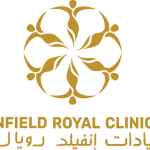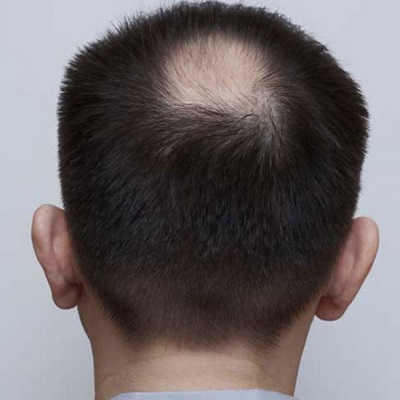Introduction
Hair loss, or alopecia, is a condition characterized by the gradual thinning and shedding of hair. It can affect both men and women, impacting self-esteem and quality of life. Although many factors, including hormonal changes and lifestyle, contribute to hair loss, genetics is a primary determinant. Understanding the genetic basis of hair loss treatment at Hair Transplant Clinic in Oman is crucial for developing effective treatment strategies, including hair transplants.
The Role of Genetics in Hair Loss
Genetics is a major factor in hair loss, particularly in conditions like androgenetic alopecia (commonly known as male or female pattern baldness). Here’s how genetics influence hair loss:
- Genetic Predisposition: Hair loss often runs in families, suggesting a hereditary component. The condition is associated with specific genes that affect hair follicle sensitivity to dihydrotestosterone (DHT), a derivative of testosterone.
- Androgenetic Alopecia: This type of hair loss is linked to genetic mutations affecting androgen receptors in hair follicles. In individuals genetically predisposed, DHT causes hair follicles to shrink, leading to shorter hair growth cycles and thinner hair.
- Inheritance Patterns: The genetic basis of hair loss involves multiple genes inherited from both parents. While it’s often thought to be passed down from the mother’s side, recent research indicates that paternal genes also play a significant role.
- Genetic Testing: Advances in genetic testing allow individuals to determine their risk of hair loss based on their genetic profile. While not all genetic factors are fully understood, testing can provide insights into susceptibility and inform preventive measures.
The Process of Hair Transplants
Hair transplants offer a surgical solution for those affected by genetic hair loss. Here’s an overview of the process:
- Consultation and Evaluation: The first step involves a consultation with a qualified hair transplant specialist. During this phase, the patient’s medical history, hair loss pattern, and expectations are assessed. A detailed examination of the scalp and hair density is conducted to determine suitability for a transplant.
- Donor Hair Harvesting: Hair transplants typically use hair follicles from the donor area, usually the back or sides of the scalp, where hair is more resistant to DHT. Two primary techniques are used:
- Follicular Unit Transplantation (FUT): A strip of scalp is removed, and the hair follicles are extracted and transplanted.
- Follicular Unit Extraction (FUE): Individual hair follicles are harvested directly from the donor area and transplanted into the thinning or balding areas.
- Preparation of Recipient Area: The recipient area, where the hair will be transplanted, is cleaned and prepared. Tiny incisions are made to receive the transplanted follicles.
- Transplantation: The harvested hair follicles are carefully placed into the incisions in the recipient area. The placement is done with precision to ensure natural-looking results.
- Recovery and Aftercare: Post-surgery, patients may experience swelling, redness, and minor discomfort. Proper aftercare, including avoiding strenuous activities and following the surgeon’s instructions, is essential for optimal results. Hair growth typically begins within a few months, with full results visible within 9 to 12 months.
Benefits of Hair Transplants
Hair transplants offer several benefits for individuals experiencing genetic hair loss:
- Natural Appearance: Modern hair transplant techniques provide natural-looking results by mimicking the natural growth pattern of hair.
- Permanent Solution: Transplanted hair follicles are resistant to DHT, making the results of a hair transplant permanent. Once the hair grows in, it will continue to grow naturally.
- Minimal Downtime: Most hair transplant procedures involve minimal downtime, allowing patients to return to their daily activities relatively quickly.
- Improved Self-Esteem: Successful hair transplants can significantly boost self-esteem and confidence, improving overall quality of life.
- Customized Results: Hair transplant procedures can be tailored to each patient’s specific needs, including the density and distribution of hair, ensuring personalized outcomes.
Characteristics of Effective Hair Transplants
Effective hair transplants share several characteristics:
- Skillful Surgeon: The success of a hair transplant depends largely on the skill and experience of the surgeon. A skilled surgeon ensures precise graft placement and natural-looking results.
- Advanced Techniques: Utilizing the latest techniques, such as FUE or FUT, enhances the quality of the transplant and minimizes complications.
- Realistic Expectations: Effective hair transplants align with the patient’s expectations and goals, providing realistic outcomes based on the degree of hair loss and donor availability.
- Comprehensive Care: Post-operative care and follow-up are crucial for achieving the best results. Adhering to aftercare instructions and regular check-ups contribute to the success of the transplant.
Conclusion
Genetics plays a significant role in hair loss, particularly through conditions like androgenetic alopecia. Understanding the genetic basis of hair loss can guide individuals toward effective treatments. Hair transplants offer a promising solution, providing natural and permanent results for those affected by genetic hair loss. With advances in surgical techniques and personalized care, hair transplants can effectively restore hair and enhance self-esteem. For those struggling with genetic hair loss, consulting with a qualified specialist can help determine the best course of action to achieve desired results.






Comments